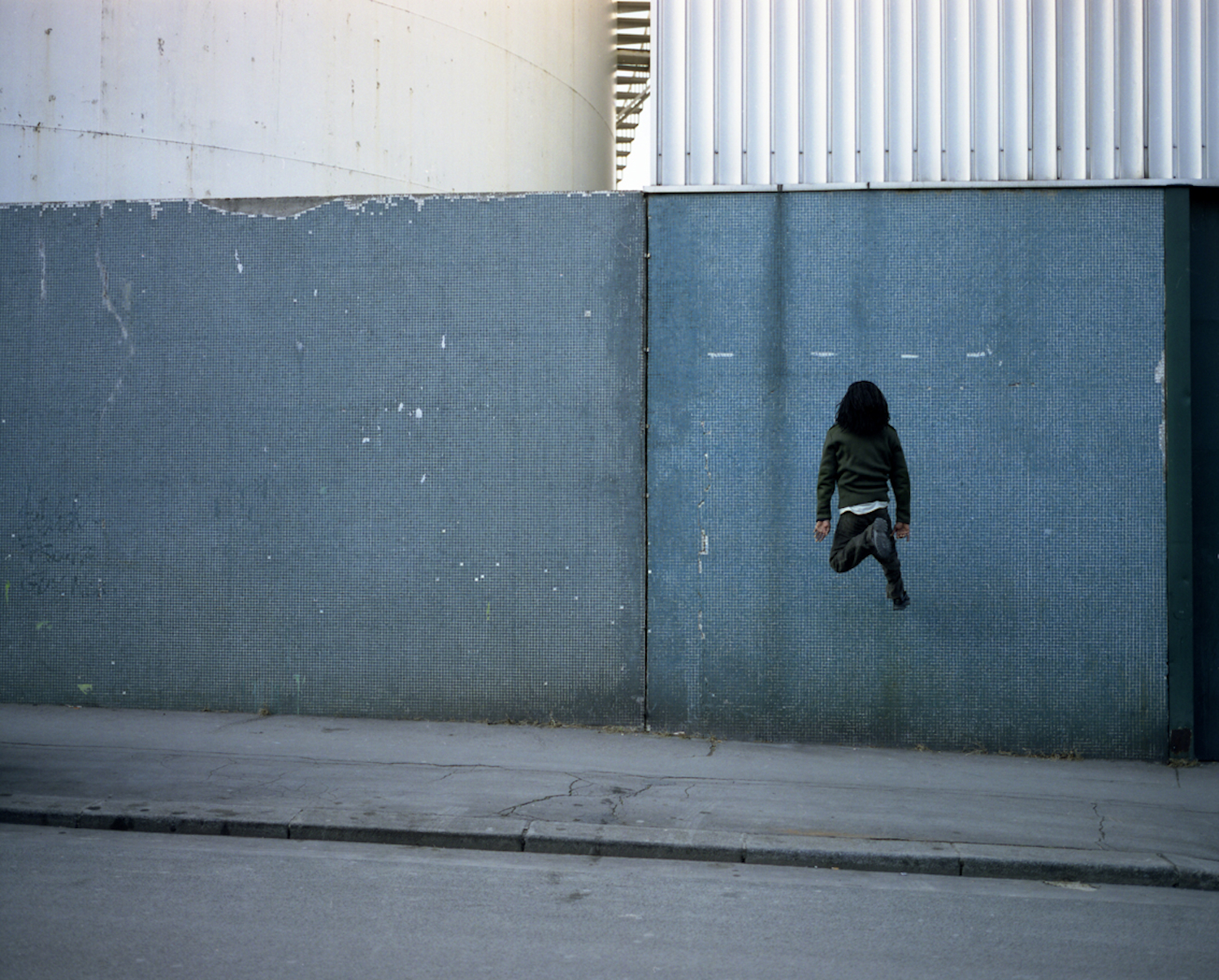In the Autumn/Winter issue of Photoworks 2006/7, Magali Jauffret reviewed Denis Darzacq's exhibition 'The Fall'.
At the end of October 2005 the electrocution of two youths who had hidden in a power station in Clichy-sous-Bois, a northern Parisian suburb, whilst being chased by the police, sparked off a violent outburst in France. It immediately spread. Instantly, riots broke out in 300 different places and lasted for three weeks. Twenty-five regions were affected, 8810 cars were torched, with 1400 cars destroyed on the night of the 6th November alone. Hundreds of public buildings, schools, gyms, libraries and shops were set alight. Even if the reasons for this were different from those that provoked the riots in May 1968, the social fabric was ripped apart just the same. France had found itself on the crossroads of three different crises: social, post-colonial and political.
[ms-protect-content id=”8224, 8225″]
A year before the riots started the photographer Denis Darzacq had rediscovered some contact sheets of a hip-hop show he had photographed in Alger. He was struck by the inherent tension of the images – by the energy that was created between the ground and the sky. These weightless bodies fascinated him, so he made plans to recreate them with the backdrop of the city. He decided to make the work in Bobigny, a notorious Parisian suburb, where he had been working for a month whilst producing the series Town Centre, Bobigny – gentle portraits of people holding their heads high and proud to have been judged worthy of representing their town.
In December 2005 – a few days after the riots – Darzacq visited suburban rehearsal halls to start photographing the hip-hop and capoeira dancers. At first he was checking it out, introducing himself and experimenting. At home, he crudely super-imposed these street dancers bodies onto the Bobigny landscapes. The aim was not to create digitally manipulated images, but to produce sketches that would serve as examples for use with the two girl and four boy dancers he had selected. It is unusual that, in the age of Photoshop, Darzacq is interested in real experience rather than virtual-reality. In exchange for this collaboration on this project not only was the dancers talent recognised and celebrated by Darzacq, but they were paid a one hundred Euro fee and were offered a print.
This work became The Fall – primarily a work of art, but also a metaphor for a younger generation that wants to speak up for itself – a generation that screams in despair. The work provokes the viewer to ask questions that go beyond just the idea of a body falling –Who are these youngsters dressed in the fashion of the estates? What will become of them? What will society do with their energy, their bodies? Just how far will this balancing act go? Where will it lead them? How does one stop the anxiety given off by the mystery of these floating bodies, levitating in front of apartment blocks?
[/ms-protect-content]
Published in Photoworks Issue 7, 2006/7
Commissioned by Photoworks
Buy Photoworks issue 7
